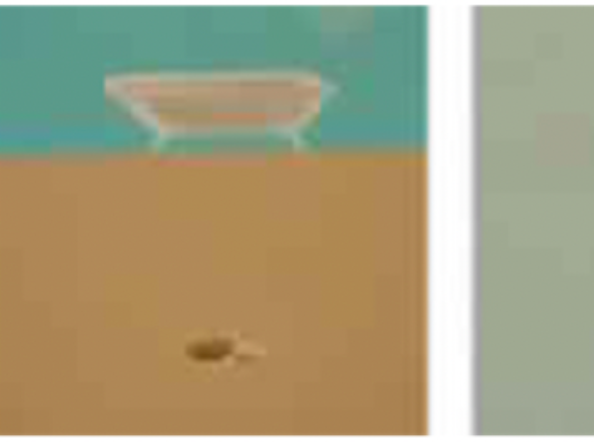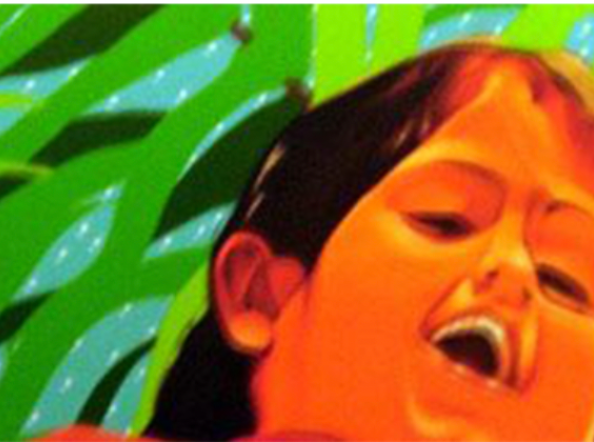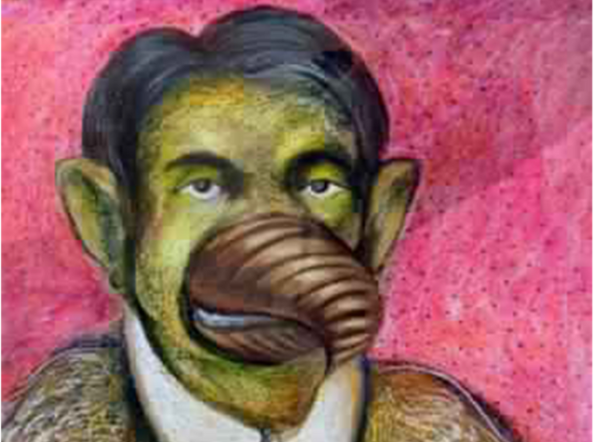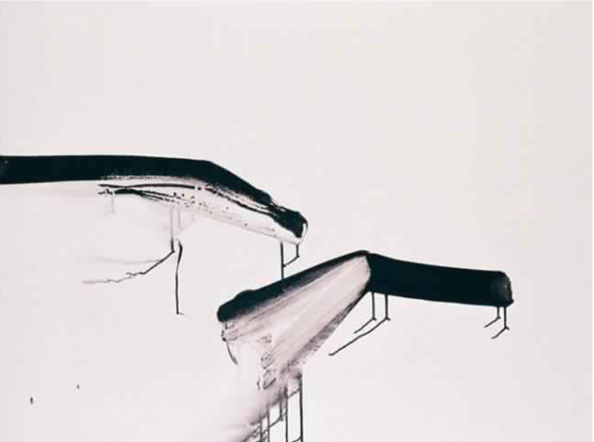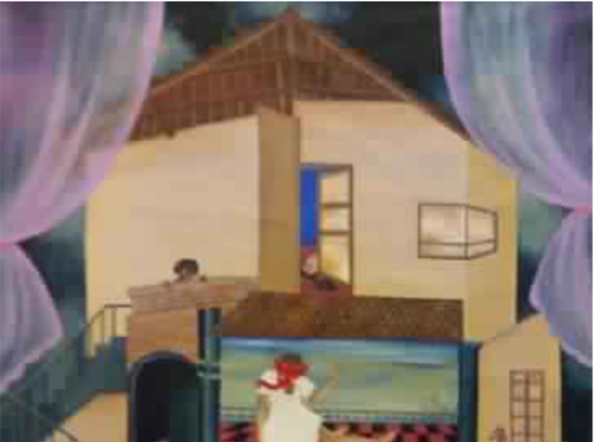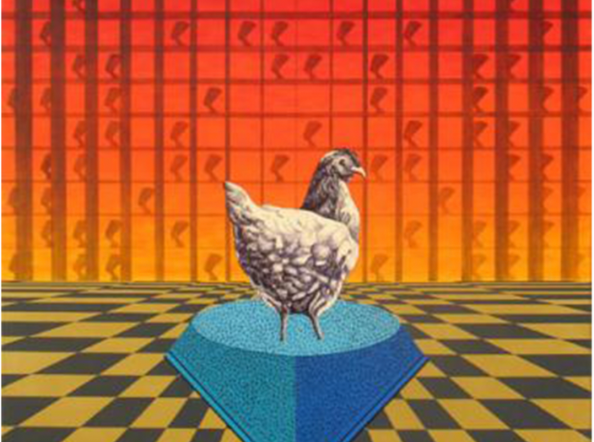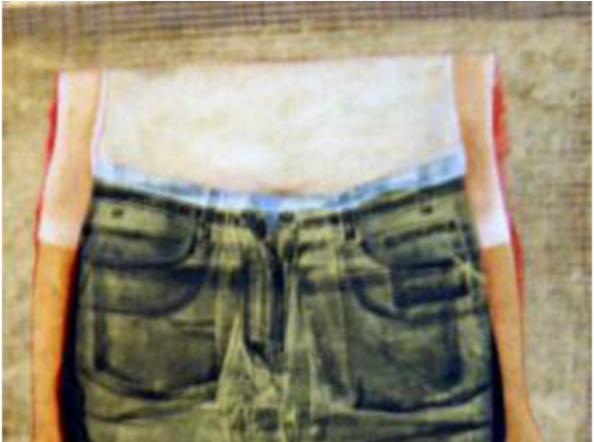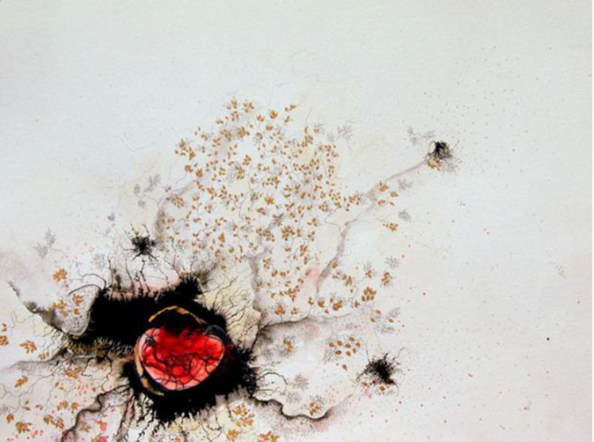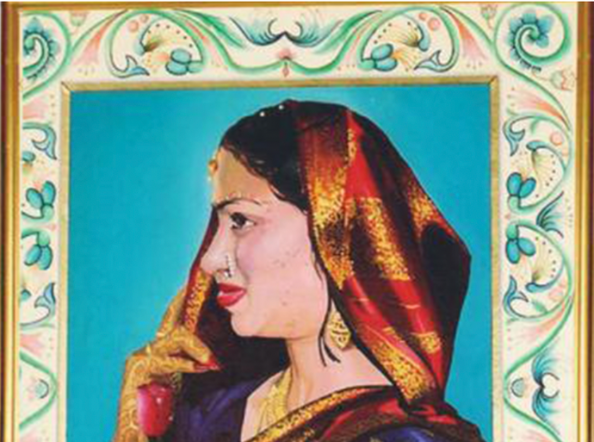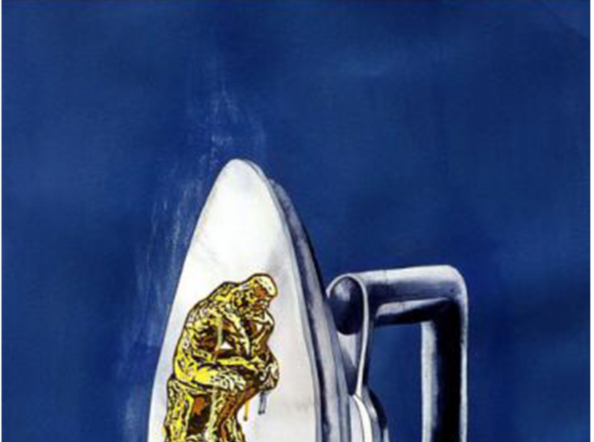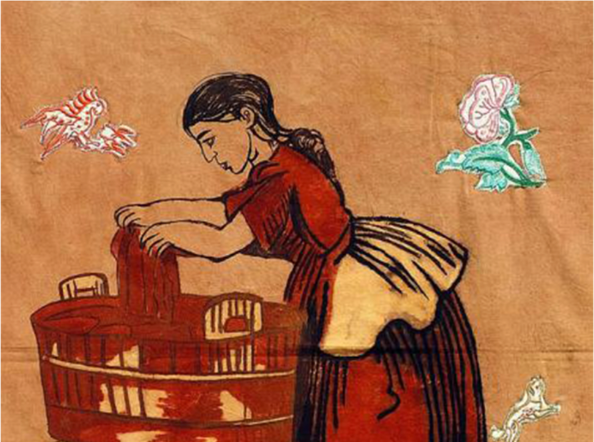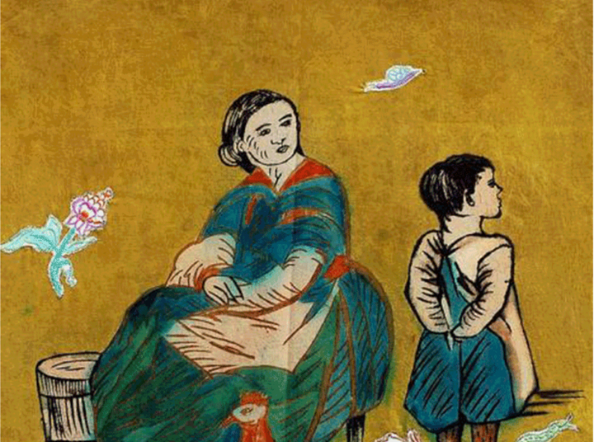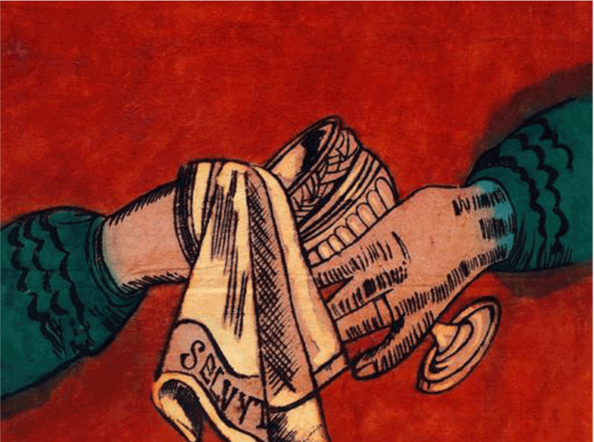-
Exhibitions
- Meandering Membranes |
Group Show
- — Ashutosh Bhardwaj
- — Lavanya Mani
- — Debraj Goswami
- — Pranati Panda
- — Sharmi Chowdhury
- — Vanita Gupta
- — Varunika Saraf
- — Vibha Galhotra
- — Viraj Naik
- — Binoy Varghese
- — Manjunath Kamath
By
Sushma Bahl
Meandering Membranes is an art collective of work by fourteen young artists from around India. Ashutosh Bhardwaj, Binoy Varghese, Debraj Goswami, Lavanya Mani, Manjunath Kamath, Minal Damani, Prajakta Palav, Pranati Panda, Sharmi Chowdhury, Vanita Gupta, Varunika Saraf, Vibha Galhotra, Viraj Naik and Zakkir Hussain are all amongst the emerging band of happening and successful young artists whose work is receiving critical acclaim and also collectors’ and market appreciation, reflecting their divergent socio political backgrounds, concerns, styles and aesthetics.
The expanse
The array of mostly new works in the collection, presents a delightful visual panorama that helps to decode the hidden emotions meandering through the artists’ membranes. The peek into their mindscapes resurfaces as images on their canvases inundated with intriguing subjects and hidden stanzas. The maze of images in the show portrays a remarkable blurring of conceptual boundaries, a submergence of the personal with the public and opening up of the world and societies, with attendant pleasures and perils. The art and artists seem to move apace in tune with the fast and ever changing scenario of today’s networked world as contemporary issues such as gender strife, clash of cultures, media mania, rich poor divide, socio political clashes and a consumerist milieu intertwined with a sense of irony become the underlying trigger and focus for much of the expressions in the show. These themes meander through the large body of work in varied media and myriad hues splashed across the canvases on display.
Self imagery and an autobiographical representation laced with theatrics of imagination seems to be the predominant language for the group of artists as they meander through their own and their contemporaries’ or society’s emotions, experiences and fears or the perceptions of the personal and public in today’s urban metros and their impact on life. They uncover the underbelly in patterns and forms that look attractive to the viewer on first glance but on further investigation address issues of humanitarian concerns such as socio political violence and degeneration that are cleverly and finely featured in the work Engrossed in these concerns the artists and their works stay close to the reality on the one hand and play around with phantasmagoria on the other. Lending themselves to layered interpretations, they also make beautiful and highly finished artistic creations.
A Closer Look
A personalized idiom and a minimalist abstract stance appear at the root of some of the artists’ membranes meandering through the work in this collection. A closer look at Minal Damani’s expressions in her minute pencil drawings, dense paintings with faint imagery suggests a flow in this direction. Given its affinity with miniature form, her dense renditions demand a deep physical and mental engagement of both, the creator and the viewer, whether it is her paintings on canvas or gouache on paper works. The depth of her intellectual sensibility is reflected in the choice of matter and materials as well as a refined execution that resists any association with grandeur. In a mix of abstraction, geometric patterns and faint form of a house her nine piece work in acrylic and ink on canvas here, has a pierced landscape and map with borders that segregate the land into confined spaces. The imagery appears restrained and focused, pleasing to the eye but not ornate, invoking the marginalized without preaching, and touching but not overtly sentimental. In a somewhat different vein but similar ethos, Vanita Gupta develops her images in a calibrated alternation between speed and patience, simplicity and intricacy, disclosure and silence, black and white and form and non-form like a riddle. A sequence of freckled abstract expressions seems to grow on the paper pulp that she often uses as the base for her play with black and white in Indian ink. A characteristic restrain, an impressive allusiveness and a Zen spirit are the hall marks of the distinct quality of her work. Her process and technique is intensive involving experimentation in preparation of paper and its texture with glue, tea and wash etc. An occasional and measured use of earthy colours such as ochre, grey, blue or brown add to the aesthetic appeal and fluidity of her work as here.
Vibha Galhotra, a print maker, painter and sculptor, who is also engaged in creating site-specific installations and animation videos, experiments in mix and match of different materials and techniques that add to the look and feel of her work. Moving from a minimalist and abstract oeuvre and in smaller format her focus has shifted to include narratives and larger works around issues of human and gender concern as seems to be the suggestion in her large canvas painting in the current show. Adding some colour and more defined forms Pranati Panda’s membranes ‘Growing Within’ continue to meander through her mix media works on paper that seem to provoke grief and menace together with an aura of joy and calm in motifs such as flower, roots, womb, germination and other sexual signifiers in her tenderly executed drawings and washed colours. The spatial compositions are carefully balanced in diligently worked texture with strategically located elements often in an off centre position as in the picture frames here that seem to reflect one’s inner most emotions.
Today’s urban metro culture and its attendant associations rendered with a touch of folk art figure in Prajakta Palav’s paintings that stand out for their form and matter in a photo realistic language and colourful expressions. Selective elements and people in and around the large and complex urban vista of Mumbai at various levels ranging from chawls to high rise plush structures together with a liberal touch of fantasy form the basis on which her work stands. The beautifully encased, be-jeweled, decked up and henna painted ‘Banithani’ in the collection here reinterprets the tradition of miniature portraiture in a contemporary context juxtaposing the middle class flashy culture and vigour expressed in her ornate attire against a background of the city’s underbelly as depicted in her demure and confused look. In a re-mix of miniature tradition of portrait painting, narrative and landscape genes together with contemporary references Varunika Saraf’s work resounds with elements that focus on the prevalent socio-political strife and violence. At a crossroad between the personal and the public and the reality with fantasy, her stance encompasses motifs that one encounters in today’s urban metros be they around gender bias in society or new media or religious motifs or isolated individuals searching within for their dreams. The beautifully painted trousers in the frame here seem on the one hand to high light the current craze amongst women for slim and petite figures while on the other, the unisex wear, seems to remind one of the raging debate around dress code for women.
Ashutosh Bhardwaj also works around what he calls “contemporary Cosmo and metro surroundings…..clichéd images” as projected in the media. Juggling with socio-politics global happenings as metaphors in his somewhat glossy and crafted creations, he questions and decodes the superficial to give it a new meaning. There is an on going dialogue between the reality and the image or history and the artifact, in his finely designed and meticulously executed line drawings and colourful geometric patterns with proverbial hen perched on an interestingly shaped platform that seems to make a wake up call reminding one of the folly of violence in killing the one who lays the golden eggs! Debraj Goswami oeuvre spins around with a paradigm shift as he looks at technological devices and their attendant developmental impact as well as negative fall outs on human life. The socio political conflicts resulting in isolation, greed and environmental degradation are highlighted in his narrative work through an imaginative juxtaposition of the soft with the hard, man and machine, interiors against the exteriors, romantic alongside the harsh and individual versus the society. He freezes on the irony of melting mental membranes that keep thinking and meandering as the hot and wired instrument stains the very piece that it is meant to iron out in the painting here in the show! The precariously placed iron that might just fall off creating havoc, high lights Debraj’s penchant for layered references with a cynical touch.
Sharmi Chowdhury follows her natural instincts in expressions that revolve around complexities of everyday life and human relationships in society. Underneath a comfortable and happy looking family portrait, the hidden layers of simmering hard emotions and clash of interests begin to surface as one looks deeper into her work. Operating at multiple levels, she incorporates familiar people, relationships and situations in various guises. The colourful renderings in her theatrical work here, present a complex conglomeration of nuances, moods and times in at least four different perspectives within carefully partitioned spaces. There is man animal interface at one level, inside outside play at another. It is tea time in the middle of the frame while acrobatic performance and a sneak photo shoot of sorts in the lower section. Manjunath Kamath trained in sculpture and experienced in illustrations and new media art, pursues of his quest for challenging the absurdity of such continuums, as he meanders through membranes and memories of his own and his daughter’s childhood as well as the happenings in life around to reconfigure them in two or three dimensional forms in variable sizes as newer narratives. Taking cues from his dealings and conversations with friends, street folk, myth makers and others, Kamath plays around with illusionist nature of things to create narrative that is mysterious and quirky. There are animals, birds, people and objects in his fables and frames actively engaged in a conversation or action or just playing a role through their silence and deceptively simple appearance. With a clever juxtaposition of unrelated imagery in a suggestive way, the artist adds a sense of fun and intensity to his five piece ensemble work here.
For Binoy Varghese migration, displacement, rural urban clash of cultures, violence and gender discrimination in society are some of the underlying concerns that engage his attention and feature in his colourful and picturesque canvases mostly in large format. He picks his imagery from the tacit world of myriad experiences while his portraiture with green foliage or flowers in bloom revolves around his photo-realistic renditions that stand out for his choice of colours, material and matter. His protagonists- Asian women and children – appear in their newfound worlds against a background of made-up environment of thick flora and fauna that engulfs and overpowers them as is the case in the look and feel of the soft skin and innocent laugh of the girl child in the work here. Lavanya Mani searches through colonial history to underscore dilemmas that today’s multi-cultural societies are confronted with. Her pictorial framework and its visual language stems from historical references, narratives and maps together with surrounding realities and landscape primarily in hand made material and fabric. In using the craft of stitching and embroidery, with its creative and economic paybacks, Lavanya focuses on a domain of prime relevance and association for women. The restrained colourful images of her canvases surface as dense carpets that entail stories of the past within contemporary context and concerns.
Zakkir Hussain’s differently represented and sensitive portrayal of contemporary milieu comes with a touch of fantasy in fine drawings and paintings. The politics of religion that triggers and often perpetuates violence underlines much of his work that rotates around socio economic realities of life in our uncaring societies. In a reconfiguration of a hybrid man animal form or the animate with the inanimate, the artist confronts some difficult personal and public issues of the day and age. Unrelated forms and figuration are put together in the same frame to add interest and depth to Zakkir Hussain’s premeditated and carefully planned creative expressions as in the show here. Viraj Naik’s hybrid imagery seems to emerge from a world of fantasy or science fiction. Trained in graphics, he is equally skilled in fine drawing and colourful painting that gives his narratives around animal and folk tales and imagined stories its legendry character and distinct appearance akin to Ardhanarishwar or Pashupati. In his own visual language of caricatures and erotic undertones Viraj brings together fact and fantasy through a hybrid mating of living and non-living elements onto his pictorial space. The pencil drawings and mixed media works on paper here make a visual treat filled with amazing animal and strange forms that seem to come from another world or outer space.
Meandering Membranes
Rooted in the soil the artists in the group have also enlarged their playing fields through external influences in a wide spectrum of realms including ideology, form and technique. There are glimpses of an amalgamation of heightened emotions, an irreverent application of the self and the other, the use of narrative myth, pronouncement for life, sexuality and contemporary concerns to represent cultural pluralism. Routing their work through a dynamic course and expressions in their respective artistic oeuvre, the artists and their works in the show entertain, communicate and make one think all at the same time in a language that is simultaneously rooted and international, bold and beautiful.
Life in middle class suburban India stretching at one end in the direction of an all pervasive new media and consumerist ethos with attendant membranes of socio political strife, to themes and images around ideas and ideals at the other, meander through much of the art-scape in the current show. Submerged in varied narratives, philosophical abstractions and nature with its flora, fauna and skyline occasionally set against imagined built structures, fictional landscapes, mythological stories and decorative elements; the group of young artists, create a remarkable range of beautifully crafted art works in varied media, materials, colours and forms. Issues around identity-relocation, inside-outside, domestic-public, sinister-safe, fantasy and reality are juxtaposed against sparse or dense drawings and ornate or mosaic decorations to accentuate the ambiguity, add fun or irony and rupture the comfort zone of the viewer to make him/her think. Refusing to compartmentalize, the artists in the show, boldly experiment and blend together different techniques using graphics, photorealistic imagery, comic renditions along with colourful painting and on other occasions also sculpture, installation and technology within one artistic creation or in different works of art.
The spatial composition made up of individual pictorial elements strategically located and executed with finesse serve as significant elements across and through the canvas. There is popular imagery, a play between mundane objects and machines, juxtaposition of unrelated objects, psychedelic/ zigzag patterns and intricate drawings, performers showing off, strange shapes and figuration evoking solitude, green expanse or meticulous interiors, built structures, myth and history reinterpreted, entangled signifiers and splashes of colours- in one form or another in one or the other artist’s work to make it a substantial show of interest to a multitude of viewers and collectors. The trajectory in variable materials and techniques- whether in abstract form or narrative style, in landscape or conceptual frame, seduces one to look first to enjoy the work and then to introspect through the meandering membranes that cross their paths.
…………………………………….
(Sushma Bahl, Formerly Head Arts and Culture for the British Council India, is an independent arts consultant, writer and curator of cultural projects)
@copyrights Sushma K Bahl
